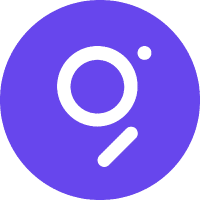What is a DAG in Blockchain Technology?

Have you ever heard of Directed Acyclic Graphs (DAGs) in the context of blockchain technology and wondered what they are? DAGs have been gaining attention as an alternative to traditional blockchain structures, offering unique benefits and capabilities. In this article, we will delve into what exactly a DAG is, how it works, and why it has become a popular choice for certain blockchain projects.
Understanding Directed Acyclic Graphs (DAGs)
A DAG is a graph structure that consists of nodes connected by directed edges, where each edge points from one node to another in a specific direction. Importantly, a DAG does not allow for cycles, meaning that you cannot traverse back to a previous node from a given node along the edges. This acyclic property is crucial in the context of blockchain technology, as it helps prevent issues like double-spending and ensures the integrity and security of the network.
How DAG Works in Blockchain
In a traditional blockchain, transactions are grouped into blocks that are linked together in a linear chain. Each block contains a set of transactions, a reference to the previous block, and a proof of work that secures the block against tampering. In contrast, a DAG-based blockchain does not rely on blocks or miners to validate transactions. Instead, transactions are directly added to the DAG structure, where each transaction confirms two previous transactions. This structure allows for a high degree of scalability and transaction throughput, as there is no need to wait for block confirmations.
The Benefits of DAG in Blockchain
One of the key benefits of using a DAG-based blockchain is its scalability. Since transactions can be processed asynchronously and in parallel, DAG networks have the potential to achieve high transaction speeds and low latency. Additionally, the absence of miners in a DAG network eliminates the need for mining rewards and reduces the energy consumption typically associated with proof of work blockchains. This makes DAGs an attractive option for environmentally conscious projects.
Examples of DAG-Based Cryptocurrencies
Several cryptocurrencies have adopted DAG technology as the basis for their networks. One notable example is IOTA, a cryptocurrency designed for the Internet of Things (IoT) industry. IOTA's Tangle protocol uses a DAG structure to enable feeless and scalable transactions between IoT devices. Another example is Nano, a digital currency focused on fast and feeless transactions. By utilizing a block-lattice architecture based on DAG technology, Nano aims to provide a user-friendly and efficient payment solution.
In conclusion, Directed Acyclic Graphs (DAGs) offer a unique approach to blockchain technology, with the potential to address scalability, efficiency, and security concerns. As more projects explore the benefits of DAG-based architectures, we may see further innovation and adoption in the blockchain space.
Latest articles
See more






















